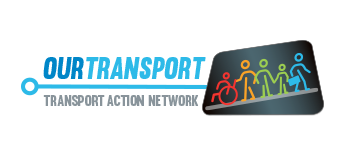ATP UPDATE:Automatic Train Protection is Almost Here
On January 31, 2003, the Waterfall disaster resulted in the tragic loss of seven lives, including the driver and six passengers. The McInerney report into the derailment identified serious failings within the organisation and delivered no fewer than 127 recommendations.
Automatic Train Protection is one of those recommendations. The McInerney report stated: “RailCorp should progressively implement, within a reasonable time, Level 2 automatic train protection with the features identified in chapter 8 of this report.”
Fast forward 20 years, and ATP is almost here, but what we are seeing roll out isn’t what the recommendation called for.
There are multiple levels of ATP:
ATP Level 1 uses in-cab computers to continuously or at regular intervals determine both the speed and location of the train. This information is compared against an authority held by the train’s computer system.
ATP Level 2 (as recommended in the McInerney Report) continually monitors the train’s speed and limit of authority, intervenes in advance to prevent exceeding either, and provides in-cab signalling.
All systems provide warnings with respect to both speed and authority, but not all systems provide speed enforcement. Where there is no speed enforcement, if the train driver ignores or does not respond to a warning, an emergency brake application is used to bring the train to a stop. Where speed enforcement is available, should a driver ignore or not respond to a warning, the in-cab system will use service brakes to slow the train to within acceptable limits. Emergency brakes are only applied if the authority will be exceeded. At Level 1, this system still operates using fixed blocks for authority and trackside signals.
Level 2 ATP is still some way off, with Sydney Trains working towards implementation through the Digital Systems project. The RTBU Locomotive Division (RTBULD) is currently consulting on this project.
By way of history, ATP Level 1 was originally agreed for implementation until roughly 2014 when the then Transport Minister, Gladys Berejiklian, decided it was more financially acceptable to purchase and implement an element of ATP Level 1, known as Limited Supervision. This reduction in the proposed safety system was based purely on saving money and quicker implementation. This lesser ATP system is being rolled out now.
ATP Level 1 – Limited Supervision, prevents train over speed on plain track and at selected (but not all) “high-risk” locations, including crossovers, level crossings, and buffer stops. The system is anticipated to prevent a high-speed roll-over, but it won’t prevent SPADs.
ATP will remain primarily a background supervisory system. If a driver is incapacitated, as occurred with the Waterfall incident, or does not adhere to the network indications or information, ATP will intervene to protect the train.
Importantly, this may not be the case in all circumstances. Through testing, it has been identified that Sydney Trains rolling stock can overspeed up to the white CountryLink speed boards before the system becomes active or intervenes.
Despite the recent excited reports from Sydney Trains during the “Train Crewing All In” live stream, there remain ongoing issues which we are attempting to resolve. Most notably is the installation of this safety system onto the Tangara. This issue stems from Sydney Trains choosing to keep the Tangara Train Management System (TMS) instead of implementing the more appropriate solution of replacing the TMS with a new train operating system similar to the Oscar or Waratah fleets.
This decision has resulted in plans for Tangara trains to re-enter revenue service in “Bypass” rather
than “ATP Normal”.
The entire network is now fitted for Level 1 ATP, except the ESR. OSCARs have been operated with ATP by NSW Trains and Sydney Trains Illawarra drivers for about 3 years.
As ATP implementation approaches, members should take note of the following important details:
• Waratah and Millennium trains will soon be enabled, and crew training has already started for depots that work with these sets. However, Tangaras will be delayed until at least July, and K sets will not be fitted with ATP at all.
• ATP Normal training involves two days in a classroom and a third day on train in service with the support of a Standards Officer.
• Drivers will be briefed on the Tangara returning in Bypass, as well as the changes made to the Tangara Desk to facilitate ATP installation.
• Drivers will receive support after training, and Sydney Trains has committed to an initial no-blame approach to ATP operational issues. Support will be provided to qualified ATP drivers from qualification, and consideration will be given to touch time.
• A and B sets will be commissioned from 28 February, M sets from 5 March, and T sets will return in Bypass from the middle of March.
• On an ATP fitted train, ATP qualified drivers must drive with the bypass switch in Normal. Non-ATP qualified drivers must drive in Bypass mode.
The RTBU Locomotive Division has continuously consulted on the ATP project from its inception through to implementation and has consistently advocated for a safe system. We welcome the long overdue safety benefits for our members and the wider community, and we will continue to support our members through the introduction of ATP and beyond. Our goal is to prevent another disaster like Waterfall from occurring.
For further information or assistance, please contact your local delegate or RTBU Head Office.




